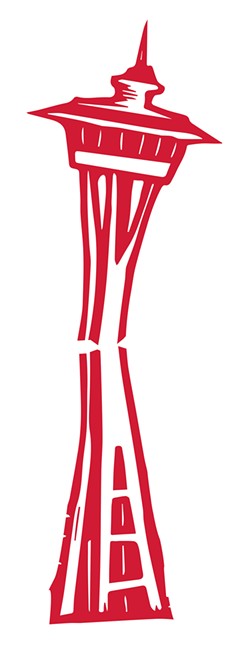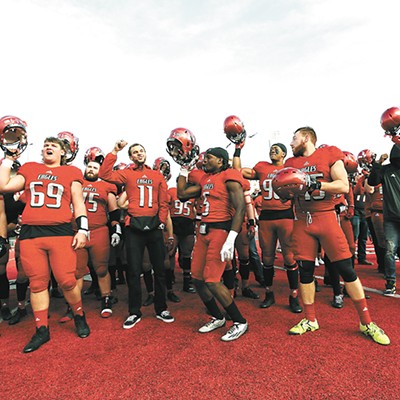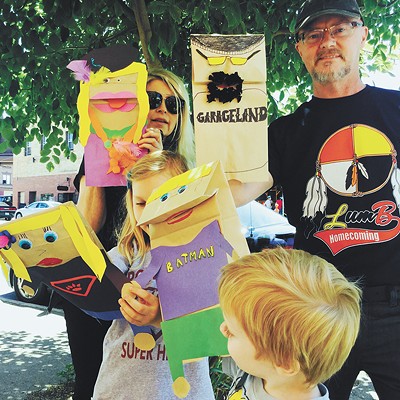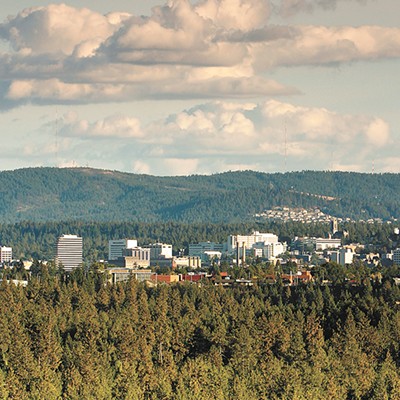It's a chilly February morning in Seattle when the dogs begin to bark. Thirty seconds later the ground is shaking. Two minutes later it's undulating. Vases and computers and furniture are toppling. It's hard to drop, cover and hold when every single thing is sliding and shaking and falling. After five minutes, the 9.0 magnitude earthquake is over. People flood out of the darkened buildings, holding their iPhones up and praying for a signal. The worst is yet to come: In 10 minutes, a tsunami will flood the West Coast from Mendocino, California, to the northern tip of Vancouver Island.
"It's as if the ocean has raised up 40 feet and flows inland," says Washington National Guard Lt. Col. Clay Braun, who has been planning for an earthquake along the Cascadia subduction zone for the past two years. Last week, an article speculating on a major Cascadia quake in the New Yorker drew attention to the havoc the "big one" will wreak on the West Coast. But how will such a devastating earthquake affect those living farther inland?
We will feel the earthquake, but Braun says our roads and buildings will mostly remain intact. Little is known about specifics, because the Federal Emergency Management Agency didn't include Eastern Washington in their Cascadia earthquake models.
"There's absolutely zero FEMA modeling for east of the Cascades," says Braun.
The power may go out, and Internet and phone service could be affected. Erin Swearingen, Avista's enterprise business continuity program manager, is confident that our electrical grid wouldn't be crippled, though. She's more worried that Avista will lose Internet or communications services that come from the west side of the state.
After the tsunami subsides, the FEMA planning scenario predicts that 13,000 people will have perished, though Washington Emergency Management's Mark Stewart says the number of casualties could vary greatly based on the time of day and year. There will be fewer deaths if it occurs at night; more in the summer when people are at the beach. Braun says 410,000 people will be displaced and another 1.25 million will be in need of food.
The National Guard will shift their headquarters east, activating their backup headquarters in Spokane "as we figure out who survived, relocate and rebuild over there," says Braun.
Fairchild Air Force Base will become a crucial relief transportation hub. Stewart says they will be "using Eastern Washington as a staging area for a lot of equipment and supplies that would be coming in to aid in the recovery: food, water and a variety of equipment to help a community get restored after such a catastrophe."
Helicopters will bring injured earthquake survivors to our hospitals. "Your hospitals and airports will be way over capacity," says Braun.
We may not see it every day, but Eastern and Western Washington are intrinsically connected. Our goods arrive through the Seattle and Tacoma ports and our exports cross the Cascades by road and rail. But after a Cascadia quake, those ports and connections will be gone. "There are so few routes across the Cascades," says Seattle Times science reporter Sandi Doughton, who wrote a book — Full-Rip 9.0: The Next Big Earthquake in the Pacific Northwest — about the potential Cascadia quake. "Landslide danger would be really high, all mountain roads will be closed by landslides, bridges will be down."
Braun says it would take six months to build a simple replacement bridge; the Cascadia Region Earthquake Workgroup estimates it will take between one and three years to restore grand transportation infrastructure.
"If you can't sustain the population with food, water and the employment, people are going to leave. If the roads are all closed, they'll walk out," says disaster consultant Eric Holdeman. "They will relocate to other areas of the state, or the nation, where they have family and friends."
For many, those family and friends will be here. "There's been a statistic thrown around for a number of years that one in three people on the west side have a relative or know someone on the east side," says Greater Spokane Emergency Management Disaster Recovery Specialist Gerry Bozarth. "If people can get over the mountains, there's no doubt in anyone's mind that displaced citizens would come here." ♦






















